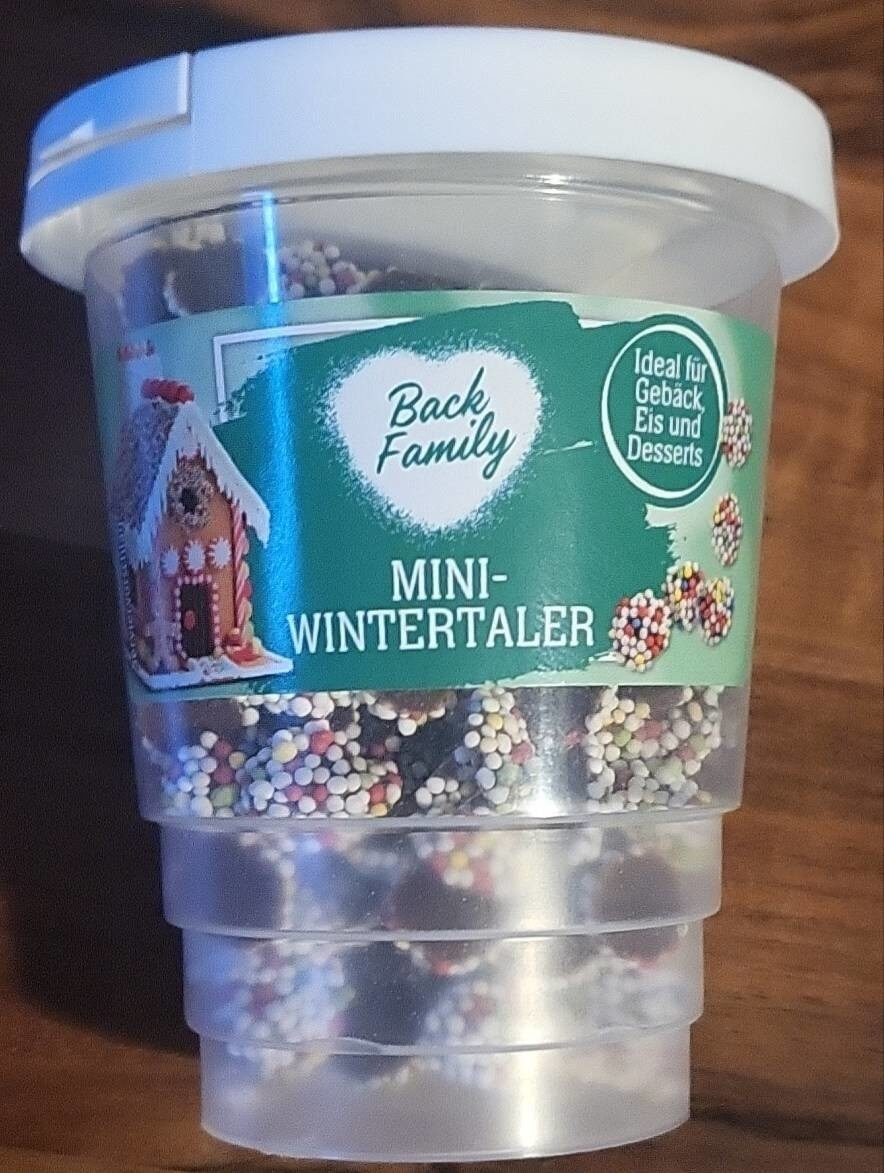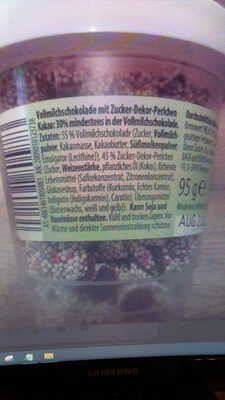Mini Wintertaler - Back Family - 95g
This product page is not complete. You can help to complete it by editing it and adding more data from the photos we have, or by taking more photos using the app for Android or iPhone/iPad. Thank you!
×
Barcode: 4061461805883 (EAN / EAN-13)
Quantity: 95g
Brands: Back Family
Categories: Snacks, Sweet snacks, Cocoa and its products, Confectioneries, Chocolate candies, Bread coverings, Cooking helpers, Food decorations, Pastry helpers, Sprinkles, Multi-coloured vermicelli
Countries where sold: Germany
Matching with your preferences
Environment
Packaging
Transportation
Report a problem
Data sources
Product added on by openfoodfacts-contributors
Last edit of product page on by racardo.
Product page also edited by frank4711, insectproductadd, kiliweb, prepperapp, yuka.sY2b0xO6T85zoF3NwEKvll11D4OP_ArvHC3vsFyE5P2FMJr5ZI1ruY-rGas, yuka.sY2b0xO6T85zoF3NwEKvlmZubPfk8g3gGi3SoFaxmIffJJDCPP1f2Yr5Kag.











